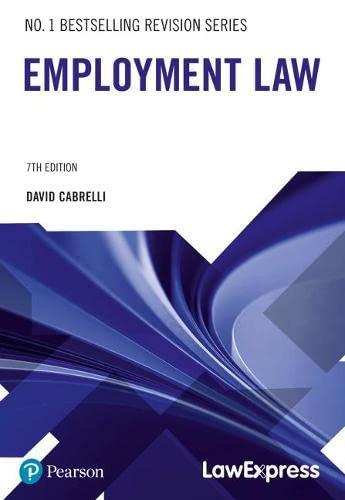Answered step by step
Verified Expert Solution
Question
1 Approved Answer
In New York Times v. Sullivan (1964), the U.S. Supreme Court first applied actual malice to libel suits filed by public plaintiffs. In Time v.
InNew York Times v. Sullivan(1964), the U.S. Supreme Court first applied actual malice to libel suits filed by public plaintiffs.
InTime v. Hill(1967), the Court extended protection under actual malice to defendants being sued for false light by requiringallplaintiffs to prove actual malice.
InHustler Magazine v. Falwell(1988), the Court extended the actual malice requirement once more to public plaintiffs suing for intentional infliction of emotional distress.
responses to the following:
- In New York Times v. Sullivan,the Court granted what it called "breathing space" to reporters. what did the Court mean by "breathing space" and why is it important?
- By extending actual malice in Time v. Hill and Hustler Magazine v. Falwell, what legal "trick" was the Court trying to keep out of the hands of clever lawyers wanting to avoid the requirement to prove actual malice? Refer to the "trick" by its term of art and explain what it means in a legal setting.
- Although the 4thCircuit Court of Appeals ruled against Food Lion, why was the Court unable to continue the expansion of actual malice inFood Lion v. Capital Cities/ABC(1996)?
- Identify how the plaintiff's allegations were different in the Food Lion case.
- Explain why that matters in actual malice
Step by Step Solution
There are 3 Steps involved in it
Step: 1

Get Instant Access to Expert-Tailored Solutions
See step-by-step solutions with expert insights and AI powered tools for academic success
Step: 2

Step: 3

Ace Your Homework with AI
Get the answers you need in no time with our AI-driven, step-by-step assistance
Get Started


